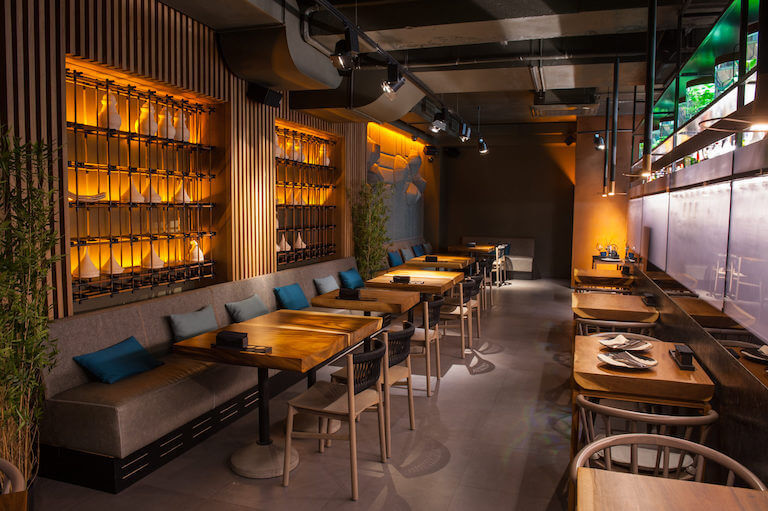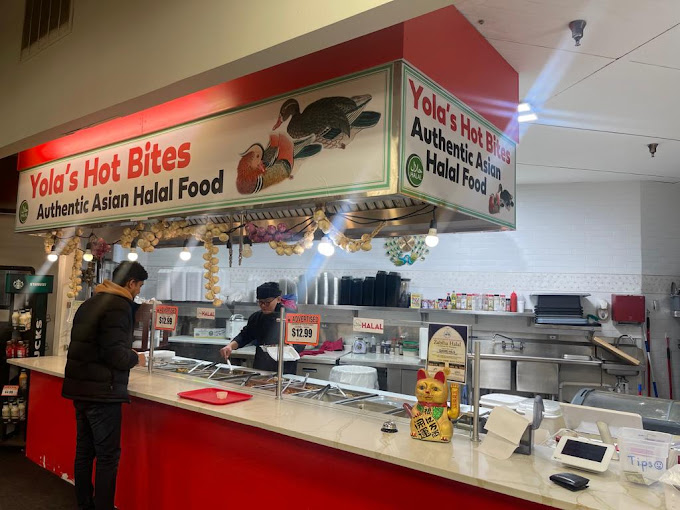Savor Genuine Eastern Cuisine With a Pan-Asian Twist for a Culinary Journey
Beginning on a cooking journey via genuine Eastern food, boosted with a Pan-Asian twist, offers an one-of-a-kind chance to check out the rich tapestry of flavors that specify the region's diverse culinary customs. As you ponder these tempting meals, consider the cultural stories and historical influences that shape them, each bite providing a story waiting to be discovered. pan asian dining Islamabad.

Checking Out Pan-Asian Flavors
In the world of international gastronomy, Pan-Asian cuisine stands out for its amazing diversity and the unified interaction of flavors from numerous Asian societies. This culinary approach commemorates the special active ingredients and rich traditions located across the continent, creating a tapestry of tastes that is both rewarding and appealing. Key to Pan-Asian food is its capacity to balance contrasting flavors-- sweet, salted, spicy, and sour-- while highlighting the quality and top quality of each component.
From the umami-rich soy sauce of Japan to the fiery chili peppers of Thailand, Pan-Asian cuisine supplies a considerable scheme of tastes. These elements are frequently integrated in innovative ways, boosting meals with layers of complexity. For example, the use of aromatic herbs such as lemongrass and cilantro, typical in Vietnamese and Thai food, includes a rejuvenating brightness to meals, while the consolidation of coconut milk delivers a luscious, rich appearance.
The focus on fresh fruit and vegetables and aromatic spices guarantees that each dish is not only a banquet for the taste but additionally for the senses. Pan-Asian food invites diners to get started on a cooking trip, checking out the large and differed landscapes of Eastern gastronomy with every bite.
Fusion Meals to Try
While Pan-Asian food is celebrated for its conventional tastes, the modern cooking landscape is increasingly welcoming fusion dishes that mix these traditional aspects with influences from other regions. This innovative method not just honors the abundant heritage of Eastern cookeries but additionally presents novel preference experiences that interest modern palates.
A prime instance of such a blend dish is the Korean-Mexican taco, where marinated bulgogi beef is covered in a cozy tortilla, topped with kimchi and a zesty gochujang-infused salsa. This mix marries the vibrant, full-flavored flavors of Korea with the vivid, fresh components of Mexican cuisine. Similarly, sushi burritos have acquired appeal, amalgamating the delicate virtuosity of Japanese sushi with the passionate, hand-held benefit of a burrito, frequently featuring blend ingredients like tempura shrimp and avocado with a drizzle of wasabi mayo.
An additional noteworthy dish is Thai curry ramen, which instills the velvety, aromatic seasonings of Thai curry into the reassuring brew of conventional Japanese ramen, creating an unified blend that tantalizes the detects. These combination dishes prolong past mere uniqueness; they stand for a culinary dialogue in between cultures, encouraging exploration and development worldwide of Pan-Asian cuisine.
Necessary Components and Flavors
To really value Pan-Asian food, one need to comprehend the important components and flavors that form its structure. This diverse culinary style draws from a rich tapestry of Asian practices, using a harmonious blend of flavors and structures. Trick ingredients include soy sauce, fish sauce, and oyster sauce, which impart a tasty umami deepness important to Eastern dishes. Corresponding to these are rice vinegar and mirin, providing a delicate level of acidity and sweetness.
Aromatic components are crucial, with ginger, lemongrass, and garlic being ubiquitous across numerous Pan-Asian dishes. These ingredients give an aromatic base that improves the complexity of tastes. Spices such as star anise, cardamom, and cinnamon introduce warmth and personality, echoing impacts from areas like China and India.

Cooking Methods and Tips
Understanding the art of Pan-Asian food calls for knowledge with its distinctive food preparation strategies, each contributing to the vibrant tapestry of flavors this culinary tradition is commemorated for. Central to these approaches is the stir-fry, a fast cooking method that protects the dietary honesty and vivid colors of active ingredients. Using a frying pan, the stir-fry approach enables also heat distribution, essential for accomplishing the particular texture and taste balance of Pan-Asian recipes.
An additional essential technique is steaming, specifically common in Chinese food. This mild approach keeps the all-natural flavors and nutrients of ingredients, making it suitable for fish and shellfish and vegetables. Dumplings, a cherished staple, commonly gain from steaming, leading to soft, delicious structures.
Barbecuing, additionally integral, imparts great smoky midsts to meals such as Oriental bulgogi or Japanese yakitori (pan asian restaurant Islamabad). This method frequently involves marinading ingredients, enabling flavors to permeate deeply before cooking over an open fire or hot plate
Finally, grasping the art of stabilizing flavors-- sweet, sour, salty, bitter, and umami-- is important. Appropriately layering these aspects can raise a meal from average to phenomenal, providing a complicated and satisfying culinary experience that symbolizes the significance of Pan-Asian food.
Dining Experiences Worldwide
Across the world, Pan-Asian food uses an unmatched eating experience, celebrated for its rich tapestry of tastes and dynamic discussions. This culinary sensation has gone beyond social borders, recording the hearts and palates of food enthusiasts worldwide. In multicultural cities like New York, London, and Sydney, Pan-Asian restaurants work read this post here as melting pots where culinary practices from Thailand, Japan, China, and beyond converge, giving restaurants with a diverse mix of dishes that highlight the area's variety.
The worldwide allure of Pan-Asian cuisine hinges on its ability to offer both authenticity and development. Cooks skillfully wed traditional active ingredients such as lemongrass, soy sauce, and miso with modern techniques, resulting in dishes that great site are both familiar and refreshingly new. This combination allows restaurants to embark on a culinary journey that appreciates heritage while accepting modernity.
Furthermore, eating experiences are raised through thoughtfully made environments that show the values of Pan-Asian aesthetics. From minimalist Japanese-inspired insides to vibrant Thai-themed spaces, each restaurant uses an unique ambiance that enhances the culinary offerings. Consequently, clients are not merely eating a dish yet partaking in a social experience, making Pan-Asian eating a truly international sensation.
Conclusion
The exploration of Pan-Asian cuisine provides an extensive understanding of the intricate interplay of flavors and cooking customs throughout Asia. By accepting fusion meals such as Thai curry ramen and sushi burritos, the cooking trip not only highlights the flexibility of typical components but also showcases cutting-edge contemporary techniques. This gastronomic adventure, enriched by cooking methods and vital spices, provides an unique opportunity to appreciate the multiculturalism and cooking creativity that define Pan-Asian food on a global scale.
Beginning on a cooking trip through genuine Oriental cuisine, boosted with a Pan-Asian spin, provides an unique possibility to check out the rich tapestry of tastes that define the region's diverse cooking customs.In the realm of international gastronomy, Pan-Asian food stands out for its amazing variety and the unified interplay of Get the facts tastes from different Asian cultures. Trick to Pan-Asian food is its capacity to balance contrasting tastes-- sweet, salty, spicy, and sour-- while highlighting the quality and quality of each component.

Comments on “Asian Restaurant ISB: A Must-Try Spot for Food Lovers in Islamabad”